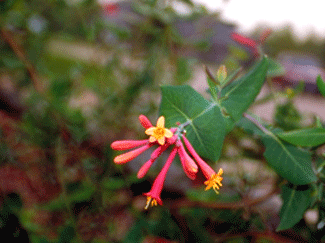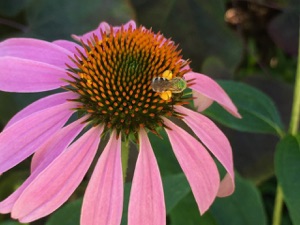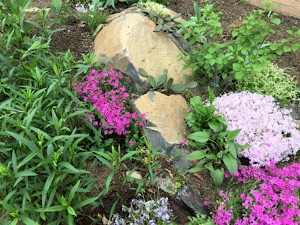From the gardener's perspective, one really great reason for landscaping with native plants is that natives require much less care and maintenance than most non-natives. Most of the non-native plants that people attempt to grow are just not adapted to the local soils and climate. Plants that are not used to the temperatures, humidity, and particular soil types found in your local area will need to be kept in a botanical equivalent of intensive care for their entire lives. This means that the gardener is constantly fighting with nature to keep the plants alive. Native plants have




-
• Are part of the local ecosystem.
-
• Are adapted to local soils and climate.
-
• Provide food and shelter for local wildlife year-round.
-
• Attract birds and butterflies.
-
• Require less maintenance, and thus conserve water and energy.
-
• Thrive with less fertilizer and disease control.
why WE go native
Trumpet Honeysuckle


evolved in their ‘natural’ range because — and therefore — they more easily thrive there.
Where native plants grow, the beneficial native pollinators will follow.
Phlox, aster, coneflower, stonecrop and prickly pear planted around ‘native’ stones (brought in from just a mile away from the site). The plants did extremely well there with little ongoing maintenance.
Photos © Eartbilt

Earthbilt Restoration Landscapes™
917/543-4064 • info@eblandscapes.com

Within a year after planting, native bumblebees were daily on the purple coneflowrs and monarch caterpillars showed up on the milkweeds planted in an Earthbilt landscape.